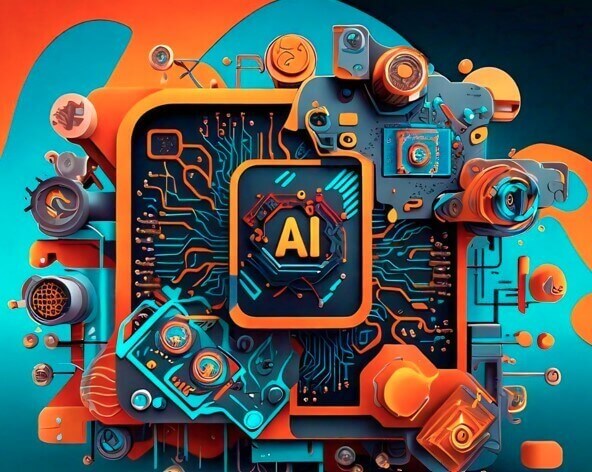Artificial intelligence (AI) is changing the way we think about graphic design. Generative AI, which creates new designs by learning from existing ones, is now a powerful tool for designers. This technology allows designers to explore new ideas and styles they might not have imagined using traditional methods.
How Generative AI Works: The Basics
Generative AI uses smart algorithms to make new designs. Two key technologies behind this are Generative Adversarial Networks (GANs) and Variational Autoencoders (VAEs). GANs involve two parts: one creates designs, and the other evaluates them to make sure they are good. VAEs work by turning data into a compact form and then creating new designs from it. These tools help AI come up with unique and creative design ideas.
Real-World Examples: AI in Design Today
Generative AI is already making waves in various fields. In fashion, tools like “DeepArt” and “Runway” create new patterns and clothing designs that break from the norm. In architecture, AI helps design innovative buildings that are both functional and visually striking. Platforms like Adobe’s “Firefly” and “DALL-E” allow graphic designers to experiment with new styles and concepts, speeding up their work and expanding their creative possibilities.
Boosting Creativity: How AI Supports Designers
Generative AI is more than just a tool—it enhances the creative process. By quickly producing multiple design options, AI helps designers explore different ideas and choose the best ones. This means designers can be more innovative and efficient. AI also assists with tasks like color choices, layouts, and text formatting, so designers can focus on bigger creative decisions.
Challenges and Concerns: What to Watch Out For
Despite its benefits, AI in design comes with challenges. One concern is that AI-generated designs might lack originality since they are based on existing data. There are also worries about AI taking over jobs traditionally done by humans. It’s important to use AI thoughtfully, ensuring that human creativity remains central while benefiting from AI’s capabilities.
Looking Ahead: The Future of Generative AI in Design
The future of generative AI in graphic design looks promising. We can expect AI tools to become even more user-friendly and accessible. These tools might be customized to fit individual designers’ needs and preferences. As AI technology continues to improve, it will likely lead to even more exciting and creative design possibilities.
In conclusion, generative AI is transforming graphic design by offering new ways to create and innovate. While there are challenges to address, AI’s role in design promises to drive the industry forward, opening up new opportunities for creativity and artistic expression.
